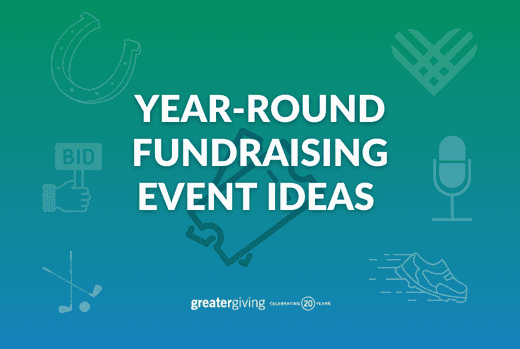Nonprofit Agency: Expert Services to Support Your Mission and Goals
Nonprofit Agency: Expert Services to Support Your Mission and Goals
Blog Article
The Function of Neighborhood Involvement in Nonprofit Fundraising: Structure Lasting Relationships for Sustainable Assistance
Community involvement is progressively acknowledged as an essential part of effective not-for-profit fundraising. By promoting real relationships with local stakeholders, organizations can grow depend on and commitment, which are important for sustainable support. Nonetheless, the methods and approaches utilized to involve areas vary extensively, increasing vital concerns about performance and effect. What are the best methods for growing these vital links, and just how can nonprofits gauge their success in this sector? Understanding these characteristics could substantially affect the future of fundraising efforts and the overall objective of nonprofit organizations.
Understanding Area Engagement
Area engagement is an essential element of successful not-for-profit fundraising efforts. Nonprofits should determine vital stakeholders-- such as community members, local services, and various other companies-- to develop effective involvement strategies.
Efficient community involvement is based on energetic listening and responsiveness to the demands and interests of the community. This procedure entails getting comments, understanding area characteristics, and ensuring that the organization's objective lines up with local concerns. Engaging the neighborhood can take different types, consisting of public conferences, volunteer possibilities, and collaboration campaigns, each designed to encourage involvement and financial investment in the company's objectives.
Additionally, neighborhood interaction must be come close to as a continuous discussion as opposed to an one-time effort. By fostering a comprehensive atmosphere where area voices are heard and valued, nonprofits can develop a solid foundation for future fundraising endeavors. Inevitably, a deep understanding of neighborhood engagement empowers companies to develop genuine links that boost their overall effectiveness and sustainability.
Advantages of Solid Relationships
Solid partnerships formed through neighborhood engagement yield many benefits for nonprofit fundraising initiatives. Most importantly, these relationships foster trust and credibility, important elements in encouraging donors to contribute. When possible fans see a nonprofit actively associated with their neighborhood, they are more probable to rely on its objective and influence.

Moreover, these partnerships promote effective interaction. Nonprofits can take advantage of their links to share tales of impact, updates, and requires, making certain that advocates remain enlightened and involved. This open line of interaction not only reinforces bonds but likewise urges word-of-mouth promo, expanding the not-for-profit's reach.
Finally, strong area connections can draw in new partners and enrollers. People and businesses are more inclined to straighten with companies that show purposeful area involvement, providing extra resources and assistance that can considerably improve fundraising capacities. Therefore, growing durable connections via neighborhood engagement is integral to a nonprofit's long-term fundraising success.
Methods for Reliable Involvement
Exactly how can nonprofits successfully engage their communities to improve fundraising efforts? Regular updates, involving material, and calls-to-action can galvanize neighborhood passion and participation.
2nd, organizing neighborhood events, such as workshops, volunteer chances, or fundraising drives, helps with face-to-face interaction, permitting nonprofits to display their effect and initiatives. These occasions not only raise funds but also cultivate relationships and allow area members to engage straight with the cause.
Third, applying individualized interaction methods can enhance involvement. Tailoring messages to particular benefactor sections based upon passions and past payments fosters a feeling of belonging and investment in the company's mission.
Last but not least, producing partnerships with local organizations and community leaders can enhance outreach efforts. Joint campaigns can enhance exposure and reputation, showing a cumulative commitment to the area's wellness. By integrating these strategies, nonprofits can develop long lasting partnerships that improve fundraising efforts and drive lasting support.
Determining Interaction Success
While engaging the community is important for effective not-for-profit fundraising, determining the efficiency of these engagement efforts is similarly vital. Establishing clear metrics enables companies to assess exactly how well they are getting in touch with their target market and achieving their fundraising objectives. Trick efficiency indicators (KPIs) such as contributor retention prices, volunteer participation levels, and interaction on social media sites platforms give tangible information for assessment.
Routinely evaluating these metrics enables companies to pivot their strategies when required, making sure that area engagement remains straightened with their general goal. Additionally, sharing these outcomes with stakeholders promotes transparency and develops depend on, urging more area participation. Ultimately, a robust dimension structure not only educates future fundraising initiatives however likewise enhances the partnership between the not-for-profit and its supporters, preparing for lasting success.
Situation Studies in Community Effect
Numerous study highlight the profound impact that community interaction can have on nonprofit fundraising success. One significant instance is the "Food for Idea" effort, where a regional food financial institution partnered with businesses and schools to host community dinners. These occasions not just increased funds but also cultivated a sense of belonging amongst participants, considerably enhancing contributor retention rates.
One more compelling case is the "Green Spaces Job," which entailed neighborhood homeowners in the revitalization of city parks. This campaign not just garnered financial support from regional businesses but likewise cultivated a volunteer base that contributed to continuous upkeep and shows. The feeling of ownership and pride amongst community participants equated into continual payments.
In the realm of arts, the "Art for All" project effectively involved neighborhood musicians and customers to create collaborative art installations, bring about boosted presence and donations for a neighborhood arts not-for-profit.
These examples highlight that when nonprofits prioritize community participation, they can develop long-term partnerships that enhance fundraising efforts, making certain sustainable support and fostering a vivid area culture. Such cases demonstrate that community engagement is not just an approach yet a crucial column of not-for-profit success.
Final Thought
In final thought, community involvement is indispensable to the success of not-for-profit fundraising efforts. Eventually, a durable structure of community support not just amplifies fundraising prospective however additionally cultivates a culture of partnership, essential for accomplishing long-lasting business their explanation objectives and sustaining purposeful impact. fundraising consultant.
Nonprofits need to identify crucial stakeholders-- such as neighborhood participants, regional organizations, and other organizations-- to produce reliable engagement techniques.

In conclusion, neighborhood involvement is important to the success of nonprofit fundraising initiatives.
Report this page